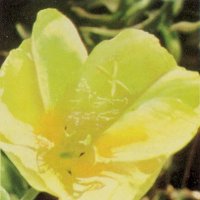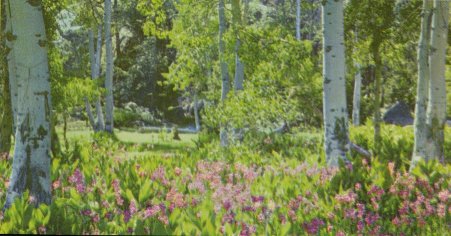
| Online Library: | Title | Author | California | Geology | History | Indians | Muir | Mountaineering | Nature | Management |
Yosemite > Library > Wildflowers > Meadows and Valleys >
Next: High Country • Contents • Previous: Foothills

|

Half Dome overlooks Yosemite Valley and a field of Sneezeweed. |

EVENING PRIMROSE Oenothera hookeri A showy Sierran flower which bursts rapidly into full bloom early in the evening. Stems 3 to 6 ft., flowers 2 to 4" across. June-September. |

Tahoe, one of the world’s largest high lakes, is shared by California and Nevada. The red Indian Paint Brush (Castilleia) is a common western wildflower. |

Ponderosa or yellow pines form a backdrop for the fragrant Western Azaleas (Rhododendron occidentalis). These shrubs, common also along streamsides in the Sierra, bloom during early summer. |

|

A forest of giant trees looks down on a meadow of blue Camass and yellow Wyethia. |

Rugged Sierran scenery is framed by Mountain Mahogany. |

FALSE SOLOMON’S SEAL Smilacina amplexicaulis These shade-loving plants are members of the lily family. Stems leafy, 1 to 3 ft. high. Undersides of leaves usually rough with short hairs. |

|

Quaking Aspens (Populus tremuloides) prefer moist areas as do many wildflowers such as Shooting Stars. |
Next: High Country • Contents • Previous: Foothills
| Online Library: | Title | Author | California | Geology | History | Indians | Muir | Mountaineering | Nature | Management |
http://www.yosemite.ca.us/library/wild_flowers_of_the_sierra/meadows.html